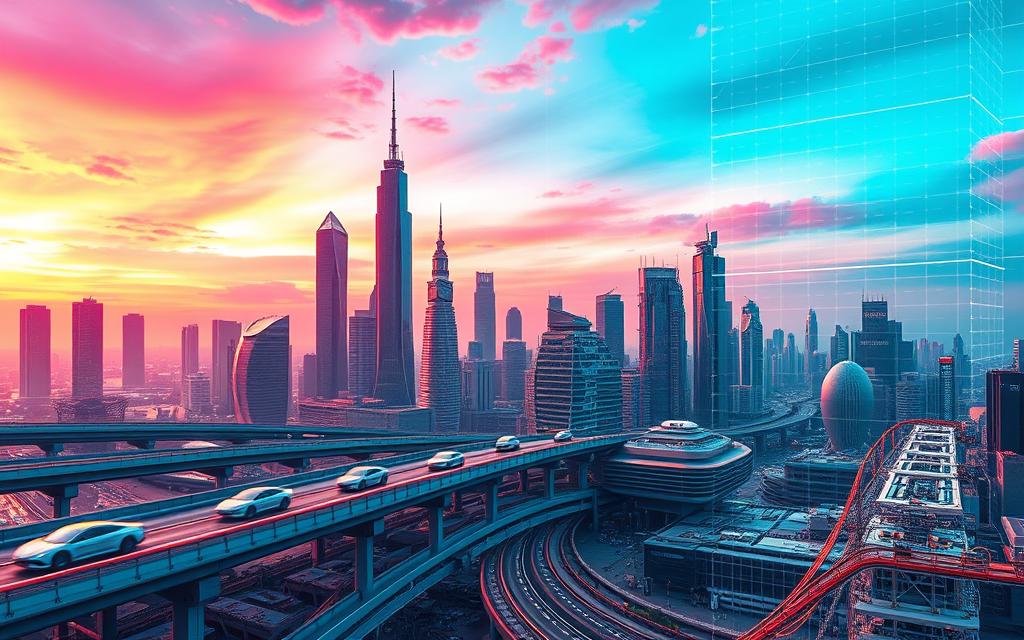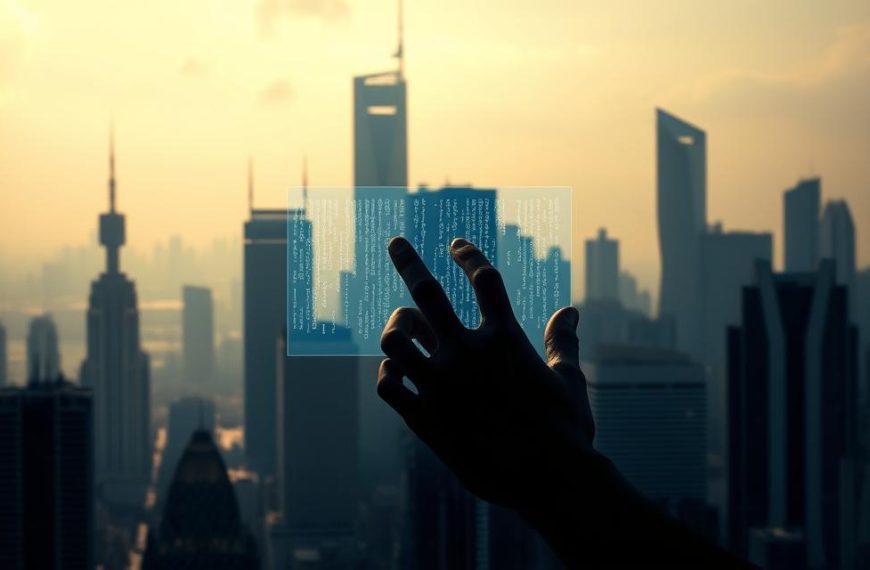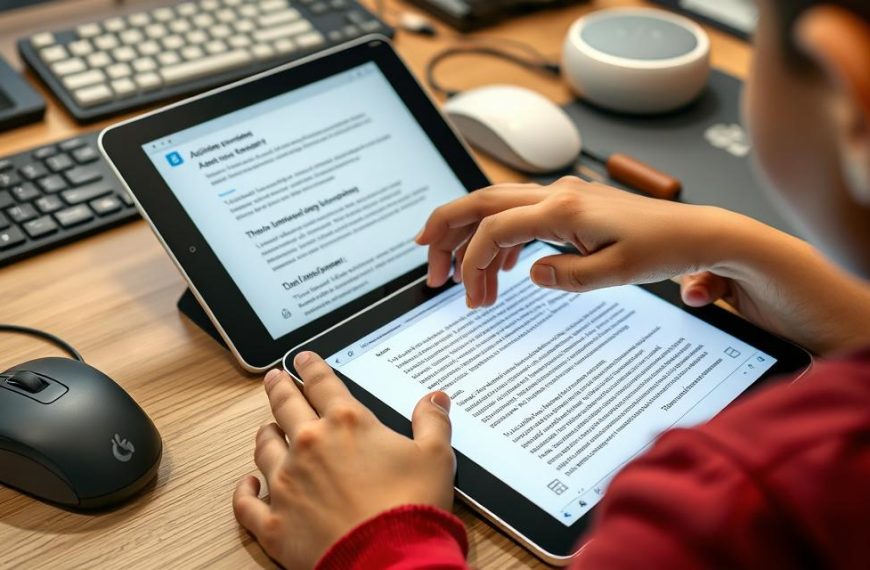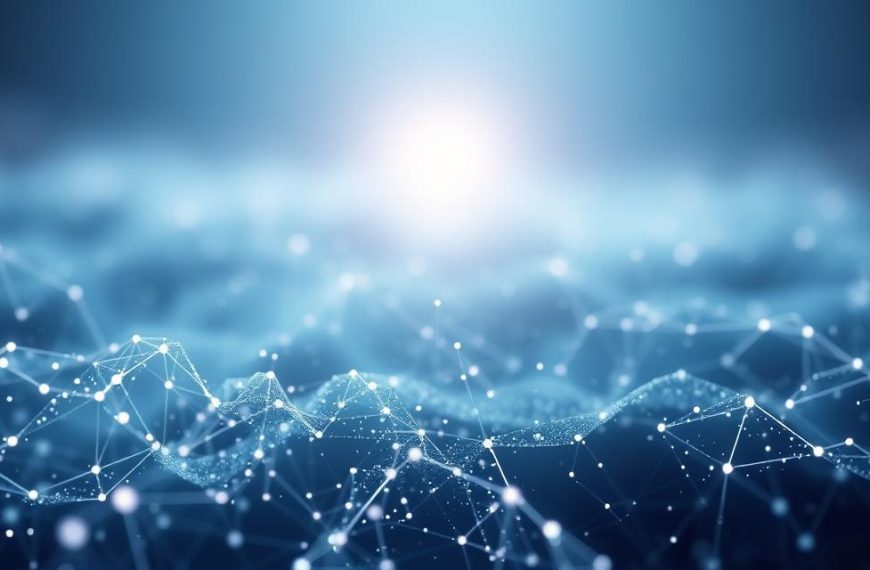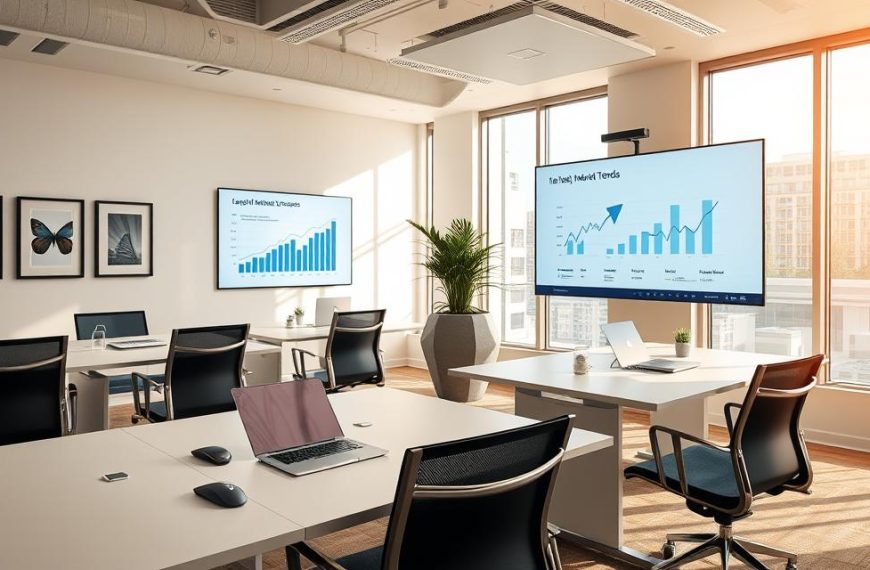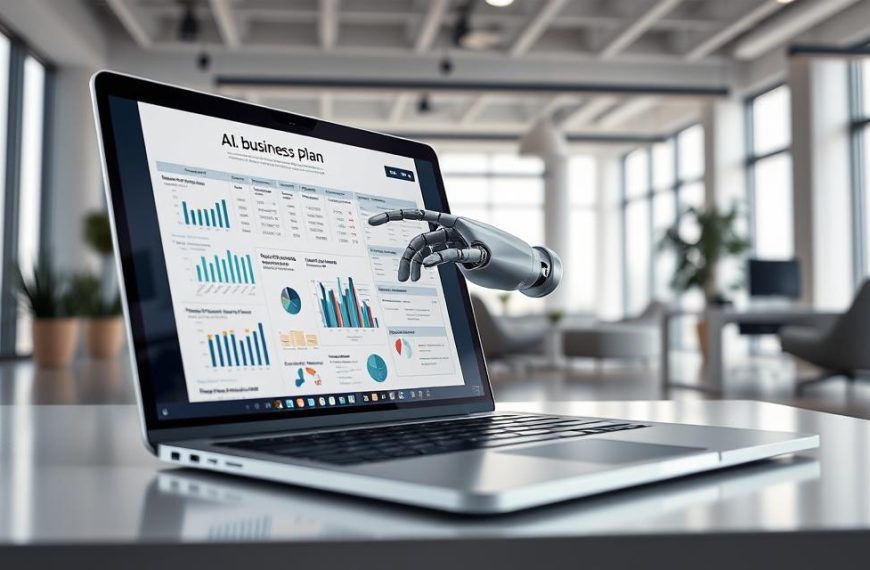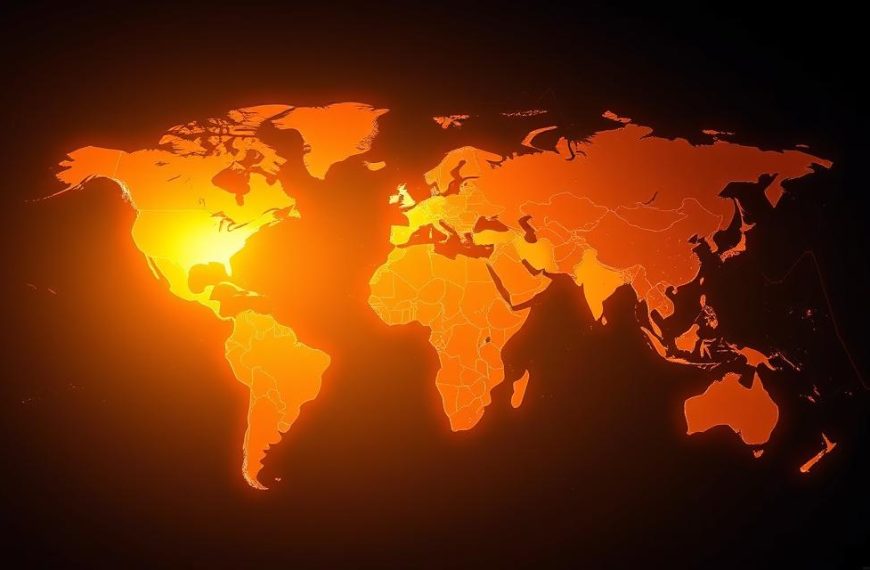The Fourth Industrial Revolution is reshaping our world by blending physical, digital, and biological systems. This era, often called Industry 4.0, brings together advanced technologies like artificial intelligence, the Internet of Things, and robotics. These innovations are transforming industries and daily life.
From personalized Netflix recommendations to optimized GPS systems, real-world applications are everywhere. Klaus Schwab, founder of the World Economic Forum, highlights both the economic potential and social challenges of this revolution. Businesses are adapting through platforms like Salesforce’s Customer 360, which helps meet evolving customer expectations.
This article explores the core technologies driving this change and their impact on society. Discover how the Fourth Industrial Revolution is shaping the future of work, sustainability, and innovation.
What Are the 4th Industrial Revolution Technologies?
Modern advancements are driving a new era of connectivity and intelligence. This transformative phase, often referred to as Industry 4.0, builds on the digital revolution’s foundations. It integrates physical, digital, and biological systems to reshape industries and daily life.
McKinsey identifies four foundational pillars of this revolution: connectivity and data, analytics, human-machine interaction, and advanced engineering. These technologies are not just theoretical; they are already impacting business and production processes worldwide.
Defining the Fourth Industrial Revolution
Unlike previous revolutions, which focused on mechanical or digital advancements, the fourth industrial phase emphasizes intelligent systems. It leverages artificial intelligence, the Internet of Things, and blockchain to create seamless, decentralized networks.
“The Fourth Industrial Revolution is not just about technology; it’s about how we adapt to these changes and create value.”
Core Technologies Driving the Revolution
Here’s a breakdown of the key technologies shaping this era:
| Technology | Application |
|---|---|
| Artificial Intelligence | Enhancing decision-making and automation |
| Internet of Things | Connecting devices for real-time data exchange |
| Blockchain | Securing supply chains and transactions |
| 3D Printing | Revolutionizing manufacturing and prototyping |
These new technologies are not just transforming industries; they are also reshaping customer expectations. A Salesforce survey found that 88% of customers prioritize experience as much as the product itself.
However, challenges remain. McKinsey reports that 74% of companies face “pilot purgatory,” struggling to scale innovations. The Global Lighthouse Network, with 103 benchmark sites, offers insights into overcoming these hurdles.
The Evolution of Industrial Revolutions
The journey from steam engines to smart factories marks a significant shift. Over centuries, industries have transformed dramatically, reshaping the way we live and work. This evolution began with the first industrial revolution, powered by steam and manual labor, and has now reached the era of intelligent systems and automation.
From Steam Engines to Smart Factories
The first industrial revolution introduced steam engines, revolutionizing manufacturing and transportation. James Watt’s invention paved the way for mass production. Fast forward to today, and we see collaborative robots (cobots) working alongside humans in smart factories. For example, an Italian coffee plant achieved a 33% boost in labor productivity through automation.
Repsol’s transition to multi-energy hubs showcases how industries are adapting. Their digital twin strategy enhances supply chain resilience, ensuring efficiency and sustainability. Similarly, Schneider Electric reduced energy consumption by 26% using IoT, highlighting the role of innovation in modern manufacturing.
How the Fourth Industrial Revolution Builds on the Past
The third industrial revolution brought computers and electronics, laying the groundwork for today’s advancements. Now, the integration of cyber-physical systems is driving the next phase. McKinsey reports a 58% automation potential in operations-intensive sectors, emphasizing the transformative power of intelligent systems.
“The future of industry lies in combining physical and digital technologies to create sustainable and efficient systems.”
Workforce skills are also evolving. Employees are transitioning from mechanical to cognitive roles, focusing on problem-solving and innovation. A semiconductor plant in Singapore reduced scrap by 22%, demonstrating how sustainability gains are achievable through advanced technologies.
| Revolution | Key Innovation |
|---|---|
| First | Steam engines and mechanization |
| Second | Electricity and mass production |
| Third | Computers and electronics |
| Fourth | Cyber-physical systems and automation |
Industries are adopting these technologies at different paces, but the impact is undeniable. From reducing energy consumption to enhancing productivity, the evolution of industrial revolutions continues to shape our society.
Artificial Intelligence and Machine Learning
Artificial intelligence is reshaping industries by unlocking new possibilities. From personalized marketing to predictive maintenance, AI’s ability to process vast amounts of data is transforming how companies operate. Salesforce describes AI as “pattern recognition at scale,” enabling businesses to deliver better services and improve quality.
AI’s Role in Transforming Industries
AI is driving innovation across multiple sectors. For example, Salesforce’s personalized marketing automation has helped companies enhance customer experiences. L’Oréal’s virtual try-on augmented reality feature allows customers to test products digitally, boosting engagement and sales.
Workforce reskilling is another critical area. Programs like PwC’s “no-left-behind” strategy focus on equipping employees with coding and AI skills. McKinsey predicts a 50%+ demand growth for coding skills by 2025, highlighting the need for continuous learning.
Machine Learning Applications in Modern Business
Machine learning is revolutionizing industries through predictive maintenance. By analyzing equipment data, ML algorithms can predict failures before they occur, reducing downtime and costs. This approach is particularly impactful in manufacturing and logistics.
However, challenges remain. Salesforce research reveals a 64% transparency deficit in how companies handle data privacy. Addressing these concerns is crucial for building trust and ensuring ethical AI use.
| Application | Impact |
|---|---|
| Personalized Marketing | Enhances customer engagement and loyalty |
| Predictive Maintenance | Reduces downtime and operational costs |
| Workforce Reskilling | Prepares employees for future roles |
| Data Privacy | Ensures ethical AI use and builds trust |
As AI and ML continue to evolve, their potential to transform industries grows. Businesses that embrace these technologies will gain a competitive edge, delivering innovative solutions and meeting customer expectations.
The Internet of Things (IoT) and Connectivity
Connected devices are reshaping how we interact with the world around us. The Internet of Things (IoT) is at the heart of this transformation, linking everyday objects to the cloud and enabling smarter decisions. From wearables to industrial machines, IoT is driving efficiency and innovation across various sectors.
How IoT is Revolutionizing Everyday Life
In our daily lives, IoT is making tasks simpler and more intuitive. Smart home devices like thermostats and security systems use sensors to adapt to our preferences. Wearable fitness trackers monitor health metrics, providing real-time insights.
In agriculture, IoT applications like Salesforce’s soil monitoring systems help farmers optimize crop yields. These products are not just convenient; they are transforming how we live and work.
IoT’s Impact on Industrial Automation
Industries are leveraging IoT to enhance productivity and reduce waste. McKinsey reports a 22% scrap reduction in semiconductor production through IoT implementation. Repsol achieved zero unexpected breakdowns by integrating IoT into their operations.
Predictive maintenance is another game-changer. By analyzing data from sensors, companies can prevent equipment failures before they occur. This approach is particularly effective in manufacturing and logistics.
| Application | Impact |
|---|---|
| Smart Grids | Optimizes energy distribution in renewable sectors |
| Parcel Tracking | Evolves from RFID to real-time IoT solutions |
| Precision Farming | John Deere’s IoT systems enhance crop management |
| 5G Deployment | Enables massive IoT connectivity |
However, challenges like cybersecurity remain. As more devices connect, protecting data becomes critical. McKinsey forecasts IoT will create $3.7 trillion in value by 2025, emphasizing its potential to drive transformation across industries.
Blockchain and Decentralized Systems
Blockchain is redefining trust and transparency in digital systems. This technology enables secure, decentralized networks that eliminate the need for intermediaries. From securing medical data to enabling token-based economies, blockchain is driving innovations across industries.
Understanding Blockchain Technology
At its core, blockchain is a distributed ledger that records transactions securely and transparently. Unlike traditional databases, it operates without a central authority. This decentralized way of managing data ensures immutability and trust.
For example, Salesforce has applied blockchain to enhance medical data security. Similarly, Web3’s token-based economics model is transforming how businesses operate. McKinsey highlights blockchain’s integration into the Industrial Internet of Things (IIoT) stack, showcasing its potential for industrial transformation.
Decentralization in the Modern Era
Decentralized systems are reshaping industries by enabling peer-to-peer interactions. Here are some key applications:
- Bitcoin vs. Supply Chain Provenance: While Bitcoin focuses on currency, blockchain tracks products like diamonds. De Beers uses it to ensure ethical sourcing.
- Smart Contracts: These automate compliance, reducing manual intervention and errors.
- Decentralized Energy Trading: Prototypes allow consumers to trade energy directly, bypassing traditional grids.
- Scalability Challenges: Blockchain faces hurdles in handling large-scale data compared to traditional databases.
- Maersk’s TradeLens: This platform enhances supply chain transparency and efficiency.
- DAOs (Decentralized Autonomous Organizations): These entities operate without centralized control, fostering innovation.
Blockchain’s potential is vast, but challenges like scalability and adoption remain. As industries embrace this technology, it will continue to redefine the reality of how we conduct business.
Robotics and Automation
Robotics and automation are reshaping industries by introducing smarter, more efficient systems. These advancements are not just about replacing human labor but enhancing productivity and safety. From manufacturing floors to warehouses, intelligent machines are becoming indispensable.
The Rise of Collaborative Robots (Cobots)
Collaborative robots, or cobots, are transforming traditional assembly lines. Unlike conventional robots, cobots work alongside humans, improving safety and efficiency. For example, BMW has integrated cobots into their production lines, reducing workplace injuries and boosting output.
Repsol’s adoption of cobots has led to significant safety improvements, showcasing their potential in hazardous environments. These machines are designed to handle repetitive tasks, allowing human workers to focus on more complex activities.
Automation’s Role in Enhancing Productivity
Automation is driving productivity across various sectors. McKinsey highlights a 1.3x automation potential in operations-intensive industries. This means businesses can achieve higher output with fewer resources.
Salesforce’s case study of an Italian smart factory reveals a 33% productivity gain through automation. By leveraging intelligent systems, companies can streamline processes and reduce waste.
Amazon’s warehouse robotics evolution is another example. Their use of automated systems has revolutionized logistics, enabling faster order fulfillment and improved customer satisfaction.
“Automation is not just about efficiency; it’s about creating safer, more sustainable workplaces.”
However, the rise of automation also brings challenges. Workforce reskilling initiatives, like Reskilling 4.0, are crucial to prepare employees for new roles. Ethical considerations in autonomous systems must also be addressed to ensure responsible innovation.
From Foxconn’s “lights out” manufacturing facilities to space exploration robotics, the applications of automation are vast. These advancements are not just shaping the future of work but also redefining what’s possible in industries worldwide.
3D Printing and Advanced Manufacturing
3D printing is revolutionizing how products are made and delivered. This technology, also known as additive manufacturing, is transforming traditional processes by enabling faster, more efficient production. From aerospace to healthcare, industries are leveraging its potential to create innovations that were once unimaginable.
How 3D Printing is Changing Production
One of the most significant advantages of 3D printing is its ability to reduce lead times. McKinsey reports an 82% reduction in production timelines, allowing companies to bring products to market faster. For example, Repsol’s digital-native plant in Bilbao uses this technology to streamline operations and enhance quality.
In the aerospace industry, 3D printing has achieved remarkable weight reductions in parts, improving fuel efficiency. Similarly, the medical field benefits from on-demand customization, such as patient-specific implants. These advancements highlight the transformative power of additive manufacturing.
The Future of Customized Manufacturing
The future of manufacturing lies in customization and localized production. Protolabs’ distributed network showcases how 3D printing can reduce carbon footprints by minimizing transportation needs. This approach not only supports sustainability but also provides greater access to tailored solutions.
Construction is another sector embracing this technology. Large-scale implementations, like 3D-printed buildings, are becoming a reality. Materials science breakthroughs, such as bioprinting, are pushing boundaries further, enabling the creation of complex structures and even potential Mars habitats.
As industries continue to adopt 3D printing, the focus will shift toward integrating it with other innovations like IoT and AI. This convergence will drive smarter, more efficient services and redefine the production landscape.
Conclusion
The future of industries lies in embracing intelligent systems and sustainable practices. As the fourth industrial revolution unfolds, businesses must adapt to stay competitive. Workforce reskilling is crucial to address technological displacement, ensuring people remain at the heart of innovation.
Sustainability is no longer optional; it’s a necessity across value chains. SMEs can thrive by adopting actionable strategies, such as integrating advanced technologies and fostering public-private partnerships. McKinsey’s $122B cash flow potential for leaders highlights the economic benefits of this transformation.
By 2030, demand for new skills will surge, requiring proactive preparation. Ethical AI governance frameworks, as emphasized by Salesforce, are essential to build trust and ensure responsible innovation. The world is changing, and businesses must lead the way with transparency and accountability.
Let’s embrace this change and work together to create a sustainable, inclusive, and innovative future.

